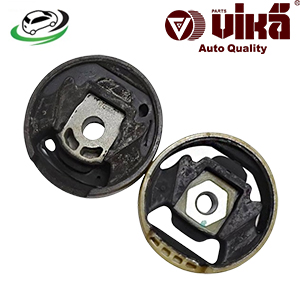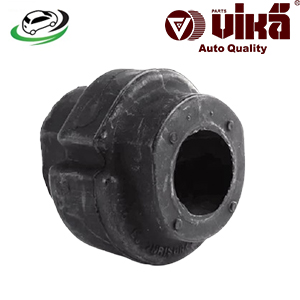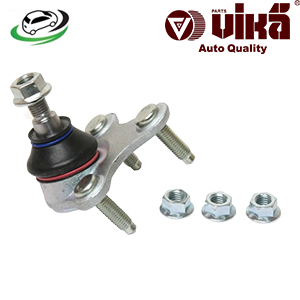-17%
Get Front Right Ball Joint Audi 8U Q3/ A3 8P/ VW EOS/ Golf R/ Golf V/VI/ Jetta V/VI/ Passat B7/ Passat B7.5/ R32 MKV/ Tiguan 1/2 1K0407366C
The front right ball joint is a crucial component of a vehicle’s suspension system, playing a key role in the steering and stability of the vehicle. This small but essential part allows for controlled movement of the suspension while maintaining a secure connection between the steering knuckle and the control arm. Understanding the function, types, and importance of the front right ball joint, as well as recognizing signs of wear and the need for replacement, is vital for ensuring the safety and performance of your vehicle.
The Function of the Front Right Ball Joint
The front right ball joint is part of the overall ball joint system in a vehicle’s front suspension, where it acts as a pivot point between the wheels and the suspension. Its primary functions include:
- Allowing Controlled Movement: The ball joint enables the suspension to move vertically while allowing the wheels to pivot horizontally. This dual movement is essential for the vehicle to absorb bumps and maintain proper wheel alignment during steering.
- Connecting Suspension Components: The ball joint serves as the connection between the steering knuckle (which holds the wheel hub and allows the wheel to turn) and the control arm (which connects the suspension to the vehicle’s frame). This connection ensures that the wheel remains attached to the vehicle while allowing for smooth steering and suspension movement.
- Maintaining Alignment: The ball joint helps maintain proper alignment of the wheels, which is crucial for ensuring even tire wear, responsive steering, and overall vehicle stability. Without a functioning ball joint, the vehicle’s alignment could be compromised, leading to handling issues and increased tire wear.
- Ensuring Safety: By securely connecting the suspension components and allowing controlled movement, the ball joint plays a critical role in the safety of the vehicle. A failure in the ball joint can lead to loss of control, making it a vital component that must be regularly inspected and maintained.
Types of Ball Joints
Ball joints are classified based on their design and the type of suspension system they are used in. The most common types of ball joints include:
- Load-Bearing Ball Joints: These ball joints bear the weight of the vehicle and are typically found on the lower control arm. They are designed to handle the load of the vehicle while allowing for movement in multiple directions. Because of their load-bearing role, these ball joints are subject to significant wear and tear.
- Non-Load-Bearing Ball Joints: These ball joints do not support the vehicle’s weight but are still crucial for maintaining proper alignment and allowing for smooth steering. They are usually found on the upper control arm in a double-wishbone suspension system.
- Adjustable Ball Joints: Adjustable ball joints allow for fine-tuning of the vehicle’s alignment settings, such as camber and caster angles. These are often used in performance or off-road vehicles where precise alignment is critical for optimal handling.
- Non-Adjustable Ball Joints: These ball joints have a fixed position and do not allow for alignment adjustments. They are commonly used in standard vehicles where factory alignment settings are sufficient.
Construction and Operation of Ball Joints
A ball joint typically consists of a ball stud, a socket, and a housing. The ball stud is connected to the steering knuckle, while the socket is attached to the control arm. The housing encases the ball stud and socket, providing protection and lubrication.
- Ball Stud: The ball stud is a hardened steel component with a spherical shape that fits into the socket. It allows for rotational and pivotal movement, enabling the suspension and steering to operate smoothly.
- Socket: The socket is made of a durable material, often metal or reinforced plastic, that houses the ball stud. It is designed to provide a smooth surface for the ball stud to move within, reducing friction and wear.
- Housing: The housing encases the ball stud and socket, providing protection from dirt, moisture, and debris. It often includes a grease fitting (zerk fitting) that allows for lubrication to be added, extending the life of the ball joint.
- Boot: The ball joint is typically covered by a rubber or polyurethane boot that seals the joint and prevents contaminants from entering. The boot also helps retain grease within the joint, ensuring smooth operation.
Signs of a Failing Front Right Ball Joint
Ball joints are subject to wear and tear due to constant movement and exposure to the elements. Recognizing the signs of a failing front right ball joint is crucial for maintaining vehicle safety and performance:
- Clunking or Knocking Noises: A common symptom of a failing ball joint is a clunking or knocking noise, especially when driving over bumps or making turns. This noise is caused by the ball joint becoming loose within its socket, leading to metal-on-metal contact.
- Excessive Vibration: A worn ball joint can cause excessive vibration in the steering wheel, particularly when driving at higher speeds. This vibration is due to the loose connection between the suspension components, leading to unstable movement of the wheel.
- Uneven Tire Wear: A failing ball joint can cause uneven tire wear, particularly on the inside or outside edges of the tire. This uneven wear is a result of improper wheel alignment, which can occur when the ball joint is no longer maintaining the correct position of the wheel.
- Steering Wander: If the ball joint is worn or damaged, the vehicle may exhibit steering wander, where the vehicle pulls to one side or feels unstable when driving straight. This is due to the loss of proper alignment and control over the wheel.
- Loose or Unresponsive Steering: A failing ball joint can lead to loose or unresponsive steering, making it difficult to control the vehicle. This is a serious safety concern that requires immediate attention.
- Visual Inspection: Upon inspection, a failing ball joint may show signs of wear such as a damaged or torn boot, leaking grease, or excessive play in the joint. If the ball joint is visibly damaged or loose, it should be replaced immediately.
Replacing a Front Right Ball Joint
Replacing a front right ball joint is a critical maintenance task that should be performed as soon as signs of wear or damage are detected. The process typically involves the following steps:
- Lifting the Vehicle: The vehicle must be safely lifted using a jack and supported with jack stands. This allows access to the suspension components where the ball joint is located.
- Removing the Wheel: The front right wheel is removed to expose the ball joint and surrounding suspension components.
- Disconnecting the Suspension Components: The ball joint is typically connected to the steering knuckle and control arm. These components need to be disconnected, which may involve removing bolts, nuts, and other fasteners.
- Removing the Old Ball Joint: The old ball joint is removed from its position, which may require the use of a ball joint separator or press. Care must be taken to avoid damaging the surrounding components.
- Installing the New Ball Joint: The new ball joint is installed in place of the old one, ensuring that it is properly aligned and securely fastened. The suspension components are then reconnected.
- Reinstalling the Wheel and Lowering the Vehicle: Once the new ball joint is in place and all components are reconnected, the wheel is reinstalled, and the vehicle is lowered off the jack stands.
- Alignment Check: After replacing the ball joint, it’s important to check and, if necessary, adjust the vehicle’s alignment. Proper alignment ensures even tire wear, responsive steering, and overall vehicle stability.
Importance of Timely Replacement
Replacing a worn or damaged front right ball joint is essential for maintaining vehicle safety and performance. Neglecting this component can lead to several problems:
- Loss of Control: A severely worn ball joint can lead to a complete separation of the suspension components, resulting in a loss of control over the vehicle. This can lead to accidents, making it crucial to replace the ball joint at the first sign of failure.
- Increased Tire Wear: A failing ball joint can cause uneven tire wear, leading to the need for premature tire replacement. Properly functioning ball joints help maintain correct alignment, extending the life of your tires.
- Damage to Suspension Components: If a ball joint fails, it can cause damage to other suspension components, such as the control arm, steering knuckle, and tie rod. Replacing the ball joint promptly can prevent these additional repairs.
- Enhanced Vehicle Performance: A new ball joint ensures that the vehicle handles as it should, with responsive steering and a smooth ride. This enhances the overall driving experience and ensures that the vehicle operates safely and efficiently.
Follow us on Facebook for more parts.



